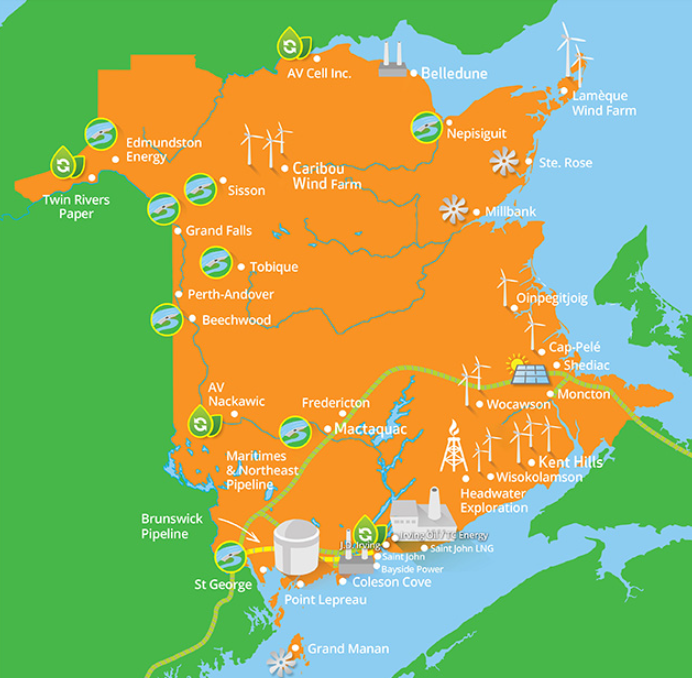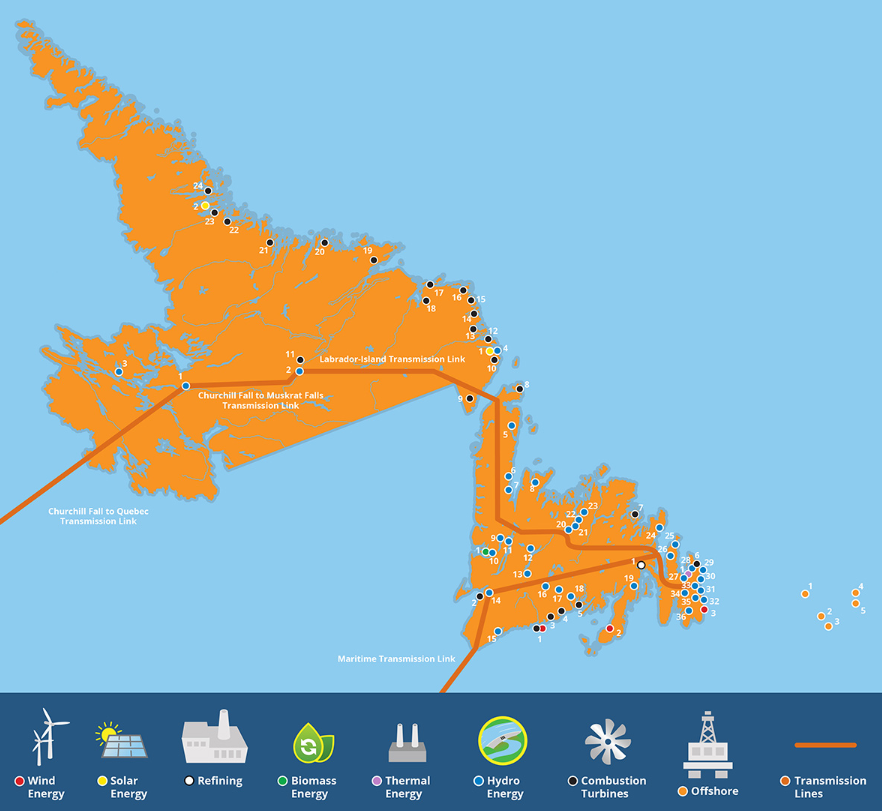Understanding the energy used in Atlantic Canada is an important step towards understanding energy affordability, reliability, and its emissions.
Many people, media, and even governments sometimes use “energy” and “electricity” interchangeably as if it’s the same thing. It’s not. There are many different types of energy we use each day. In fact, most energy used in the Atlantic provinces is not even from electricity.
For example, in 2021, nuclear energy supplied about 40% of all the electricity generated by NB Power. Uranium represented just 18% of New Brunswick’s primary energy demand.
How is energy use calculated?
The energy we use is typically measured as end-use energy demand, which is the amount of energy consumed by customers (people and most businesses). It could include gasoline for a vehicle, electricity to heat a home, or natural gas used to manufacture items such as landscaping bricks, for example.
But end-use energy demand doesn’t capture all the energy used in a region as a lot of energy is also used while making the energy products customers need.
That’s where primary energy demand comes in. It is the total amount of energy used in a region, including the energy needed to produce end-use energy. This could include the total energy used to make gasoline or electricity.
How are primary energy demand and end-use energy demand different?
To help explain the differences between the two, we can consider natural gas as an example.
Natural gas can be used directly to heat homes and businesses, but is also used to help make electricity, which also heats homes and businesses. In this case:
- natural gas used to make electricity would be considered primary demand
- the electricity made would be considered end-use demand
- natural gas used directly to heat homes and businesses would be counted as both primary and end-use demand. For other types of energy that aren’t transformed from electricity or a fuel before they reach the final consumer, they are counted in both primary and end-use energy demand. Examples include electricity from hydroelectric, wind and solar generation.
Why is primary demand higher than end-use demand?
Primary energy demand is often much larger than end-use energy demand because when one source of energy is converted to make another, there are losses (second law of thermodynamics).
These losses generally occur because water is heated to make steam to turn turbines (apart from natural gas-powered plants).
For example, most energy used to make electricity from uranium (nuclear), coal, natural gas and other fossil fuels lose about two-thirds (67%) of the raw energy value that goes into their process. These losses happen because they usually use heated water to make steam to turn turbines.
Modern generating equipment and other technologies (e.g. electricity transmission) are increasingly more efficient but will always have energy losses.
Energy imports and exports also play a role in why primary and end-use demands can differ in a province.
How is energy used in Atlantic Canada?
The majority of end-use energy demand for Atlantic Canada comes from industrial uses (40%). Transportation requires about 31% of primary energy demand, followed by 19% for residential users and 10% for commercial.
Additional primary energy demand comes mostly from industrial purposes, especially the energy needed or lost when converting energy from one source into another (electricity generation, RPPs, etc.).
Nationally, relatively more end-use is needed by industry and less for transportation (53% and 20%).
How will energy use change as Atlantic Canada moves towards net-zero emissions?
To reach net-zero emission targets, the federal and provincial governments should follow primary and end-use energy demand closely. Some recent federal regulations, including the output-based pricing system requirements, the Clean Fuel Regulations, the Clean Electricity Regulations, and the proposed oil and gas sector emissions cap, all aim to limit carbon emissions across primary and end-use sources.
However, government support programs often focus on reducing residential emissions. While important, most energy use and emissions produced come from industrial emissions, large transportation, and generating fuels and electricity.
To successfully meet emission reduction goals, it is clear that industrial and transportation sectors must use more clean fuels (hydrogen, biofuels) and electricity from non-emitting sources.
For residents, their energy wallet will change as the types of energy and technology they use do. For example, if a family moves from furnace oil to an electric heat pump to warm their home, end-use energy demand will change (less RPPs and more electricity), as will their total energy costs (likely decreasing).
Resources:
- Canada Energy Regulator, Provincial and Territorial Energy Profiles (2022)
- S. Energy Information Administration, Today in Energy, July 21, 2020: More than 60% of energy used for electricity generation is lost in conversion
- Simon Fraser University, M. Bahrami, ENSC 388: 2nd Law of Thermodynamics
- Energy 101 series – Integration: How renewable energy resources fit into the electricity grid
- Energy 101 series – Balancing the Grid











